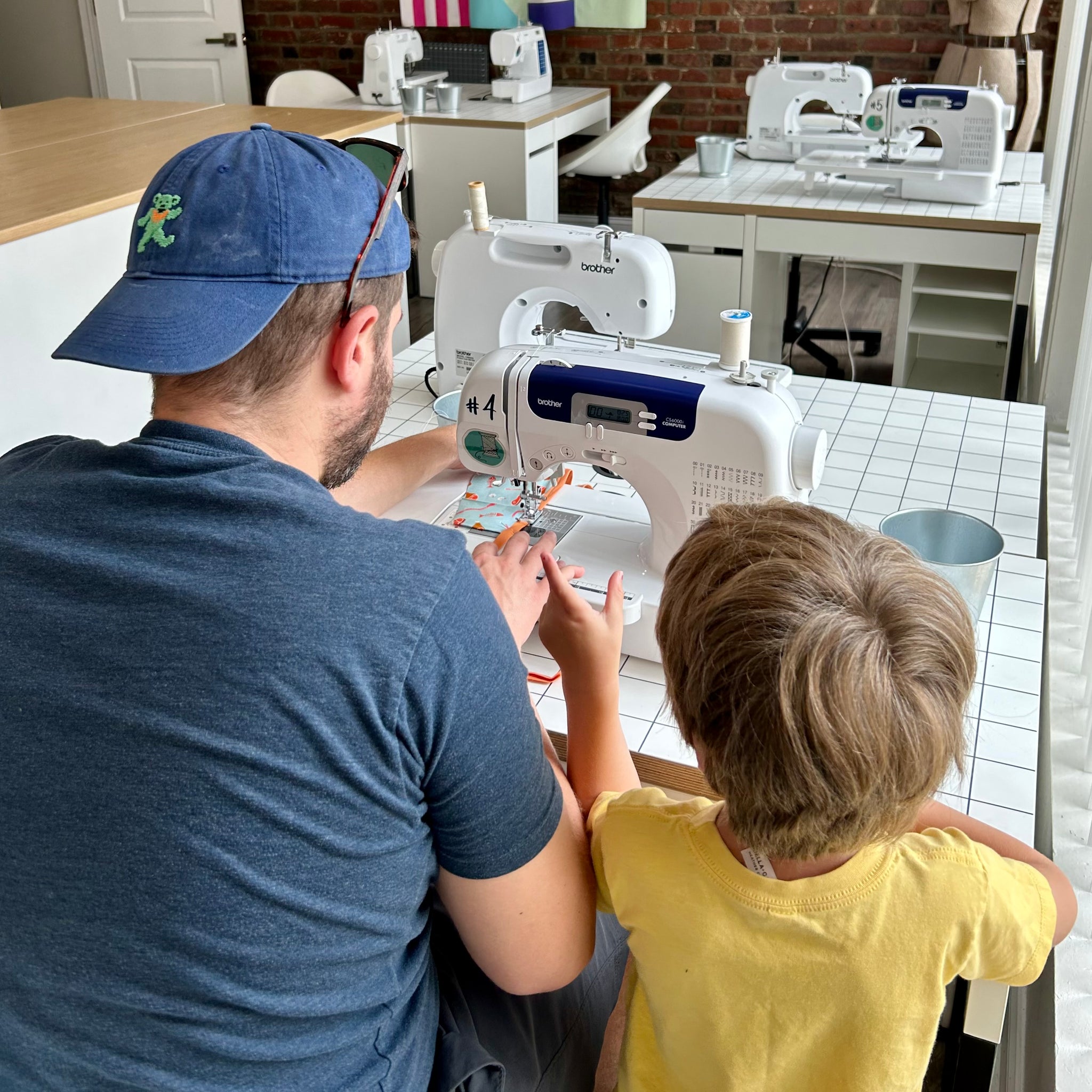Sewing Lessons for Kids: An Educational and Fun Activity for Young Minds
Sewing Lessons for Kids: An Educational and Fun Activity for Young Minds
Blog Article
Unlock New Abilities: Why You Should Think About a Sewing Lesson for Kids
In a world controlled by electronic distractions, sewing lessons for youngsters arise as an unanticipated yet compelling avenue for skill-building. These lessons, which promote imagination, great electric motor capacities, and problem-solving, offer more than just a charming leisure activity. They grow strength, impart patience, and introduce standard life abilities. As children yield concrete arise from their effort, a sense of accomplishment occurs, causing an extensive change in their self-confidence. Discover why these lessons could be a transformative experience for your youngster.
The Art of Stitching: An Overview
Sewing, a classic art, incorporates a selection of techniques that have been given via generations. When early humans used bones and pet sinews to join pieces of hair and conceal, its origins date back to the Paleolithic period. With time, this rudimentary technique progressed into a sophisticated craft, incorporating utility and looks.
From hand-sewing to device stitching, the treatments vary throughout societies and contexts. Some produce complex embroidery, others style durable clothing, while specific practices offer ritualistic purposes. Traditional quilting in The United States and copyright, Sashiko in Japan, or Kantha in India exemplify the variety of this craft.
Today, regardless of technological innovations, the significance of sewing dominates. It's a practical ability, a therapeutic activity, an imaginative electrical outlet, or also a resources for several. Introducing youngsters to stitching can be an important financial investment, fostering imagination, improving hand-eye sychronisation, and presenting a sense of achievement. The following section will dive into the benefits of stitching lessons for young students.
Secret Advantages of Embroidery Instructions for Kids
Sewing promotes kids's capability to bring ideas to life, thereby fostering their creative and innovative side. When a stitch goes incorrect or a pattern requires change, youngsters need to create options, thus honing their crucial thinking.
Embroidery lessons likewise imbue perseverance and willpower. Embroidery is a careful craft, calling for sufficient time and accuracy.
Lastly, embroidery can be a self-confidence booster - sewing lessons for kids. Every completed task brings a sense of accomplishment, improving children's self-confidence. Sewing lessons can bring a host of benefits, making it a beneficial enhancement to youngsters' skill-building activities.
Just How Embroidery Increases Kid Development
With a myriad of cognitive and functional benefits, the effect of sewing on children's advancement is profound. This hands-on task motivates the development of great electric motor skills as kids browse via the material with a needle, promoting accuracy and dexterity. The concentration needed for embroidery also improves emphasis and focus span, crucial high qualities for scholastic success.
Beyond physical abilities, stitching aids cognitive advancement. It includes understanding instructions, planning, and analytical - every one of which boost the mind's executive functions. Moreover, it presents youngsters to standard mathematical concepts like shapes, measurements, and fractions in a practical, appealing way.
Last but not least, sewing has emotional advantages. The process of creating something tangible boosts a child's self-confidence and feeling of success. The perseverance and perseverance needed to complete a stitching task also educate useful life lessons regarding difficult work and the happiness of seeing a task with to completion.
Age-Appropriate Stitching Projects for Kids
Having comprehended the myriad benefits of sewing for youngster development, it is equally vital to consider appropriate sewing tasks that straighten with a kid's age and skill degree. For young beginners, ages 5-7, straightforward tasks like threading grains onto a string can improve hand-eye control. As they grow older, ages 8-10, they can progress to stitching switches or crafting tiny textile products such as pillowcases.

Choosing the Right Sewing Lesson for Your Child
Just how does one tackle picking the appropriate stitching lesson special info for their kid? It starts with recognizing the child's rate of interest degree and ability collection. A standard embroidery course covering easy stitches and safety actions would be excellent if the kid is a full novice. For those with a little experience, a training course that presents patterns or more complicated projects could be better.
Moms and dads ought to additionally take into consideration the teaching technique. Does the kid discover better in a group setup or one-on-one? The trainer's qualifications and experience are important. A patient and educated teacher can make all the distinction in a child's knowing experience.

Verdict
To conclude, stitching lessons offer an enhancing experience that expands beyond imagination. They straight from the source cultivate important life abilities like analytic, patience, and mathematical ideas. Age-appropriate sewing tasks not just increase confidence yet also support general kid growth. Considering a stitching lesson for your youngster can certainly unlock a myriad of new skills and supply a special, beneficial learning opportunity.
Having understood the myriad benefits of stitching for youngster advancement, it is similarly essential to consider appropriate sewing tasks that align with a kid's age and skill degree. sewing lessons for kids.Just how does one go regarding choosing the right embroidery lesson for their youngster? If the kid learns much better in a physical setting, regional sewing lessons could be a good alternative. In conclusion, these factors play a substantial function in choosing the appropriate embroidery lesson for a child
Age-appropriate sewing jobs not only enhance self-confidence however additionally sustain general child growth.
Report this page